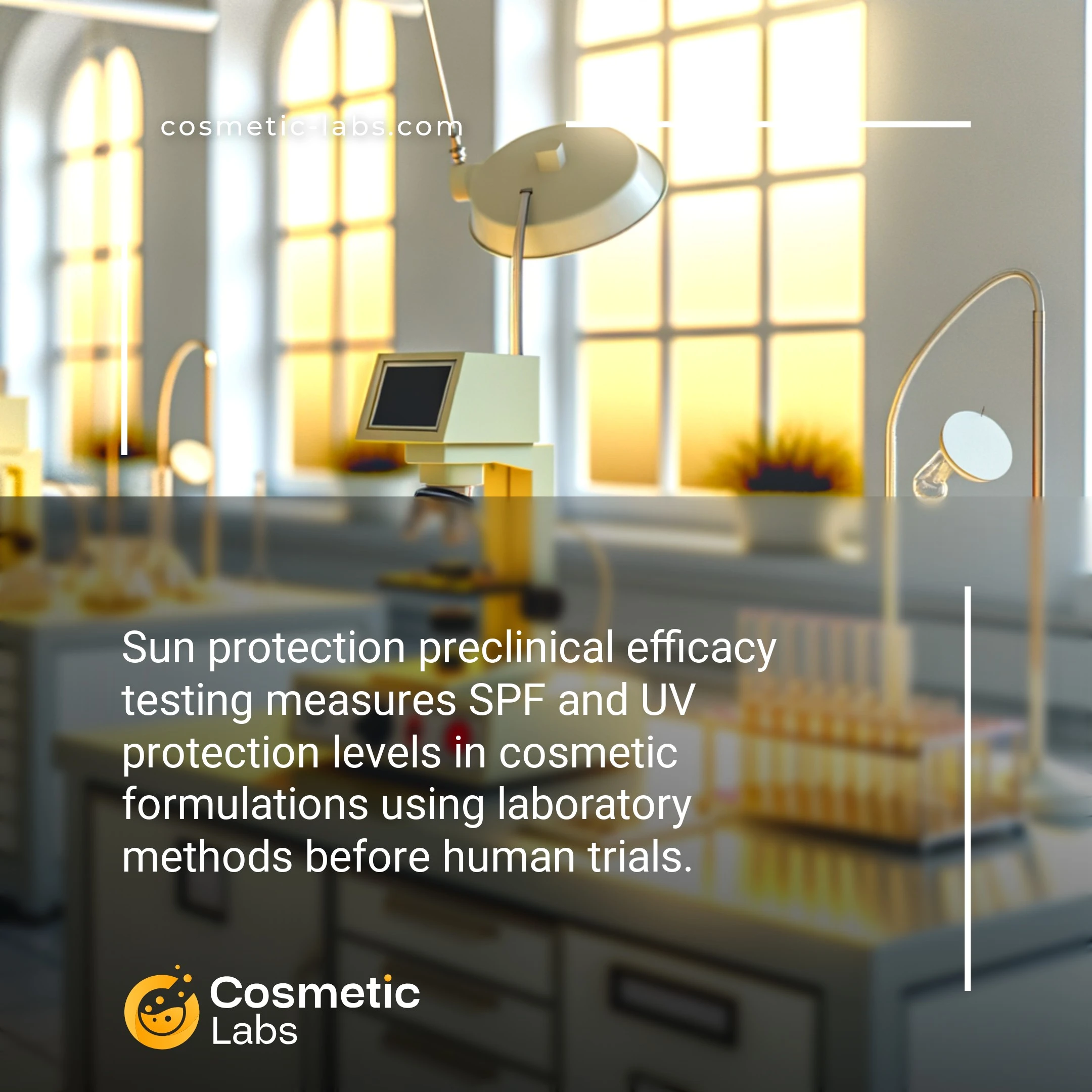Sun Protection Efficacy Testing Services For Cosmetic Brands

What is Sun protection efficacy testing?
Sun protection preclinical efficacy testing services evaluate UV filters and formulations before human trials through laboratory methods like spectrophotometry and in-vitro assays. Labs measure SPF values, broad-spectrum protection, and photostability using standardized protocols, while artificial skin models simulate real-world UV exposure conditions. These tests help brands validate product claims and meet regulatory requirements before launching sunscreen formulations.
Why do you need this service?
Cosmetic brands use SPF verification testing to validate their sunscreen formulations meet FDA requirements before market launch, while ingredient suppliers rely on photostability assessments to demonstrate their UV filter compounds maintain protection under real-world conditions. These lab services deliver regulatory-compliant data that supports product claims and accelerates approval timelines for sun care launches.
Who provides Sun protection efficacy testing services?
All cosmetic labs providing Sun protection efficacy testing services
There is no company providing these services at the moment.
Sun Protection Preclinical Efficacy Testing Services
Cosmetic labs provide sun protection preclinical efficacy testing to validate UV protection claims before market launch. These services measure SPF values, broad-spectrum protection, and photostability using standardized protocols that support regulatory submissions and marketing claims.
SPF and Broad-Spectrum Testing Protocols
Labs run in vitro SPF testing using UV transmission analysis and spectrophotometry to determine protection factors. This testing evaluates UVA and UVB absorption across the solar spectrum from 290-400 nanometers. Most facilities follow FDA and ISO standards for consistent, reproducible results.
Key testing parameters include:
- SPF value determination (2-50+)
- Critical wavelength measurement for broad-spectrum claims
- UVA/UVB ratio analysis
- Water resistance evaluation
Photostability and Performance Assessment
Testing labs evaluate how sunscreen formulations maintain protection under UV exposure over time. Photostability testing simulates real-world conditions by exposing samples to controlled UV radiation doses. This data helps formulators optimize ingredient combinations and concentrations.
Performance assessments typically measure:
- Protection factor retention after UV exposure
- Active ingredient degradation rates
- Film formation and adhesion properties
- Compatibility with other cosmetic ingredients
Connect with specialized cosmetic labs on our platform to access validated sun protection testing services that support your product development timeline and regulatory requirements.
6 subcategories of Sun protection efficacy testing services
There are no results matching your search
Practical Applications of Sun Protection Preclinical Efficacy Testing
Sun protection preclinical efficacy testing applications enable cosmetic brands to validate UV protection claims before market launch through controlled laboratory environments.
SPF and Broad-Spectrum Validation Testing
Labs conduct in vitro SPF testing using UV spectrophotometry to measure protection factors across UVA and UVB wavelengths. This testing occurs on artificial substrates that mimic skin properties, allowing brands to screen formulations before expensive human volunteer studies.
Testing protocols include critical wavelength determination for broad-spectrum claims and water resistance evaluation through controlled exposure cycles. Labs typically complete these assessments within 2-3 weeks, providing SPF values from 2 to 100+ and UVA protection ratios.
Photostability and Degradation Analysis
Photostability testing evaluates how UV filters maintain protection after sun exposure through accelerated aging protocols. Labs expose formulations to controlled UV doses equivalent to 2-8 hours of natural sunlight, then measure protection retention.
This analysis identifies filter degradation patterns and helps optimize stabilizer combinations. Results show percentage protection loss over time, enabling brands to make stability claims and determine recommended reapplication intervals.
| Test Method | Timeline | Key Measurements | Regulatory Application |
|---|---|---|---|
| In Vitro SPF | 5-7 days | SPF 2-100+, UVA/UVB ratio | FDA monograph compliance |
| Photostability | 10-14 days | Protection retention % | EU cosmetic regulation |
| Water Resistance | 3-5 days | SPF after immersion cycles | Label claim validation |
Connect with specialized cosmetic labs on our platform to access validated sun protection testing protocols for your formulation development needs.

